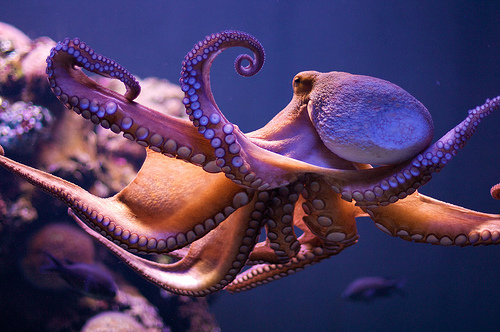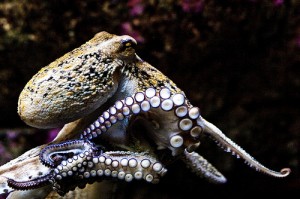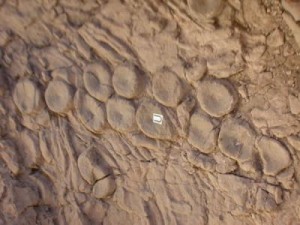 I probably shouldn’t say this, but I love it when scientists occasionally throw all caution to the wind and clamber out on what seems a visibly shaky limb. Not of course, when they are offering up some new off-the-wall theory on autism or sudden infant death syndrome or flu vaccines—fields in which a little speculation could do a lot of harm. But in areas such as archaeology and palaeontology, a little derring-do on the far end of a branch can occasionally be a blessed relief—a reprieve, however short-lived, from a small mountain of papers that go on at numbing length on lithic use wear, say, or collared rim sherds, and neglect to inform the reader why these matter.
I probably shouldn’t say this, but I love it when scientists occasionally throw all caution to the wind and clamber out on what seems a visibly shaky limb. Not of course, when they are offering up some new off-the-wall theory on autism or sudden infant death syndrome or flu vaccines—fields in which a little speculation could do a lot of harm. But in areas such as archaeology and palaeontology, a little derring-do on the far end of a branch can occasionally be a blessed relief—a reprieve, however short-lived, from a small mountain of papers that go on at numbing length on lithic use wear, say, or collared rim sherds, and neglect to inform the reader why these matter.
All this came to mind recently when I came across research that an American palaeontologist presented this month at the annual meeting of the Geological Society of America. To make a long story short, Mark McMenamin, a palaeontologist at Mount Holyoke College in South Hadley, Massachusetts, thinks he’s found fossil evidence for a kraken—a massive, predatory, tentacled beast from the deep that took down carnivorous ichthyosaurs the size of school buses during the Triassic Period.
The kraken was a creature of Norse mythology, a monster said to wrap entire Viking longships and knarrs in its loving embrace and drag them down to its ocean-bottom lair for a leisurely munch. McMenamin believes that he has found the lair of a real kraken—and not, I hasten to add, a mere garden-variety giant squid—in what is known as the Luning Formation at Berlin-Ichthyosaur State Park in Nevada.
 Here, in a nutshell, is McMenamin’s case. In 1860, prospectors hunting feverishly for gold in the mountains of Nevada stumbled on a rich fossil bed containing remains of a 45-foot-long marine mammal known today as an ichthyosaur. When palaeontologists began excavating there in earnest 90 years later, they discovered a weird assemblage of at least nine fossil ichythosaurs that dated to the Triassic Period, some 250 to 200 million years ago. The find puzzled a lot of very good researchers. How on earth did all these huge animals land up dead in the same place?
Here, in a nutshell, is McMenamin’s case. In 1860, prospectors hunting feverishly for gold in the mountains of Nevada stumbled on a rich fossil bed containing remains of a 45-foot-long marine mammal known today as an ichthyosaur. When palaeontologists began excavating there in earnest 90 years later, they discovered a weird assemblage of at least nine fossil ichythosaurs that dated to the Triassic Period, some 250 to 200 million years ago. The find puzzled a lot of very good researchers. How on earth did all these huge animals land up dead in the same place?
Over the years, paleontologists have floated two main theories. Some thought there was a mass stranding of ichthyosaurs in shallow waters. Others proposed death by a toxic plankton bloom. But some current research suggests that the ichthyosaur-laden stratum was in fact a deep ocean-floor. And as for the toxic bloom idea, McMenamin gives it short shrift. No such poisoning, he explains, could account for why nine dead ichythosaurs ended up in exactly the same place on the seabed.
So McMenamin searched for another explanation. The skeletons, he noted, were partially disassembled—as if a predator had broken apart their carcasses—and the bones displayed betrayed different degrees of decay processes, suggesting that the animals had died at different times. Putting these fragments of evidence together, the palaeontologist concluded that some unknown marine predator had killed the ichthyosaurs Agatha-Christie style—one by one—and carried their corpses off to a deep ocean floor lair.
 According to McMenamin, this sounded a lot like the behaviour of a giant squid or a mega-octopus, a clever, brainy creature capable of vanquishing large toothy prey. He then calculated that the ancient predator had to be twice as big as the school-bus-sized ichythosaurs in question. Hence a kraken.
According to McMenamin, this sounded a lot like the behaviour of a giant squid or a mega-octopus, a clever, brainy creature capable of vanquishing large toothy prey. He then calculated that the ancient predator had to be twice as big as the school-bus-sized ichythosaurs in question. Hence a kraken.
It’s an entertaining hypothesis. And I confess that reading it made my day. But there’s no smoking gun, no fossil remains of this kraken-like creature to clinch the case, nothing at all that would quiet scoffers or convince skeptics. But McMenamin was undaunted. Indeed, he danced out even further on the metaphorical branch. He noted that the vertebral discs of the ichthyosaurs looked as if they had been arranged in a deliberate pattern—a kind of three-dimensional image that resembled the suckers on an octopus’s tentacles. “Thus,”concluded McMenamin in his abstract, “the vertebral disc pavement may represent the earliest known self-portrait.”
Wow, I thought. How is that for a scientist sticking his neck way, way out, leaving a huge target for critics? But thank you, Mark McMenamin for this image of a narcissisic Triassic kraken with an artistic bent, a paleo-monster in keeping with the season, as we dig out costumes and masks for the Hallowe’en that will soon be upon us.
Upper photo of an octopus, courtesy Morten Brekkevold; middle photo of octopus, courtesy Joachim S. Mueller; Lower photo of fossil bed showing arrangement of ichthyosaur vertebral disks, courtesy Mark McMenamin
I’m with you. It’s cool to hear their hypothesis before they’ve figured it for fact. I’ve always thought the sea held a lot more than we were or are aware of… this makes me think I was right. Great post!
I have to think that the arrangement of the vertebrae must have something to do with the shape of the creature’s lair (if that’s what it was). If this creature lived there it would presumably eat, rest etc. in particular places and wouldn’t want them spiky with icthyosaur bones. So they’d be brushed off into a corner, and there might be only one way they snugly fit. I’d want to know a lot more about how much a creature might be able to see at such a depth before assuming portraiture!
And all this is just nicer than assuming some freak of current and a funnelled piece of seabed, isn’t it…
Jonathan:
Yes, I definitely agree that there’s many other possible explanations for that patterning of the vertebral disks. But I particularly like your comment about the lack of light at that depth–unless the kraken had an underwater flashlight.
nice post, heather. what fun! i don’t think that mcmenamin’s rationale is so much different from some other science hypotheses, which start out kind of wooly. think luis alvarez. the next step is to gather evidence, which, in mcmenamin’s case, may be a tad elusive. just to jump on my hobbyhorse for a quick ride, i don’t see much difference between mcmenamin’s thinking and that of the sociobiologists and evo psycho advocates, which stephen gould called “just-so stories”. just so.
Hey Skeptico, thanks! Certainly McMenamin has his work cut out for him in terms of assembling a, ahem, waterproof case. I don’t know a lot about sociobiology–it’s a long way from archaeology, my main topic–but it seems to me that a lot of those arguments are anchored in the theory of evolution. The notion of an painterly kraken seems to come out of left field.
Hello Heather
I am sending a note on behalf of a friend who is not very able with computers. He wanted to thank you for your article in Scientific American about the First Americans. (I think he would really enjoy this blog too, but doesn’t have a computer).
Anyway, he found a tool in his yard recently that resembles the box cutter tool in the photo in the article. I have written to Dr. Waters about it, because my friend would like to know more about this tool, for example how old it is, or where the chert came from that it is made of.
If you know of any other avenues to pursue, or people to contact, to learn more about this artifact, it would appreciated. He lives near Vancouver.
Thank you.
Hello Yvonne:
Please thank your friend for his interest in my writing. Probably the best way to get that stone tool checked out would be for your friend to contact Grant Keddie, the curator of archaeology at the Royal British Columbia Museum in Victoria. If you could help your friend by taking a few digital photos of the tool and then emailing them to Grant Keddie at gkeddie@royalbcmuseum.bc.ca , then he can take a look at the photos and may be able to tell you a little more about it. Good luck with this!